

 The South African
The South African
SYNOPSIS
This paper studies the use of an innovative Improvised Explosive Device (IED) against British and colonial forces during the AngloBoer War in South Africa (1899-1902). Using existing material, the paper examines the tactical and technical aspects how the IED was used against British trains on the Pretoria-Delagoa Bay Railway Line between September 1900 and July 1901. In order to assess the effectiveness of the device, a replica was made and a trial held in Pretoria using a steam locomotive which simulated conditions of the time as closely as possible. As a consequence of the research and trial results, a number of deductions were made, increasing the knowledge base of this particular aspect of the war.
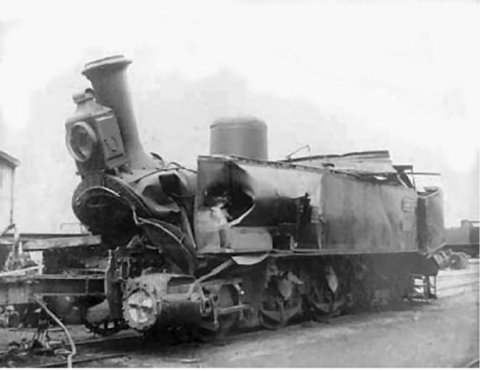
Background
During the Anglo-Boer War in South Africa, the key means of communication for British forces engaged on military operations was the railway network. The other supply route alternatives, ie, roads, paths and tracks, were unpredictable at certain times of the year, due to variable seasonal weather conditions. Their use was also reliant upon the supply of dependable oxen and horses. The British experienced a great deal of difficulty in maintaining healthy livestock throughout the war (D Hall, 1999, p240). The general shortage of horses, particularly in the war's earlier stages, and the widespread poor condition of troop horses present in South Africa; hindered the mobility of the British and colonial forces (I G Spence, www.defence.gov.au/ army/ahu/docs/The_Boer_War_Spence.pdf). As a result, the British Army was forced to use the rail network to move troops, materiel and combat supplies through the country.
By 24 September 1900, the Orange Free State and most of the Transvaal south of the Delagoa Bay Railway Line were under British control. The British forces quickly discovered that they could only control areas of the northern Transvaal Republic which were physically occupied by military columns (E Lee, p 125). The vast expanse of the former Boer republics made it impracticable for the 25 000 British and colonial troops to control the territory effectively. Furthermore, the great distances between British columns allowed the Boer commandos considerable freedom of movement. As a consequence, Boer commanders decided to adopt a strategy of guerrilla warfare. Initially, these tactics presented difficulties for the conventional British forces; time would have to pass before effective counter-measures could be developed and employed against the guerrillas. Boer commandos were sent off to their own districts with orders to act against the British whenever an opportunity presented itself. Their strategy was to cause as much damage as possible and then to move off quickly, disappearing into the veld prior to the arrival of British reinforcements.
Boer attacks relied upon sound intelligence provided by fast-moving units such as Danie Theron's Verkenners (Scouts)(Lee, p126). Early on in the war, the Boers recognised that the British reliance upon the railway was a significant weakness which could be exploited (R Sibbald, 1993, p29). By late 1900, the nature of attacks against British trains had become increasingly sophisticated and well executed. To deal with this threat, the British began to equip themselves with additional armoured trains, some of which were built as far away as Bulawayo, Southern Rhodesia (now Zimbabwe). Four such trains were constructed in Cape Town before the war began. An armoured train was deployed in support of Lord Methuen during the advance of his division west from the Cape Province towards the Orange Free State border; another three were positioned at Stormberg, Mafeking and Kimberley. Two others were deployed in support of the British forces in Natal and Bulawayo (Hall, 1999, pp241 , 244).
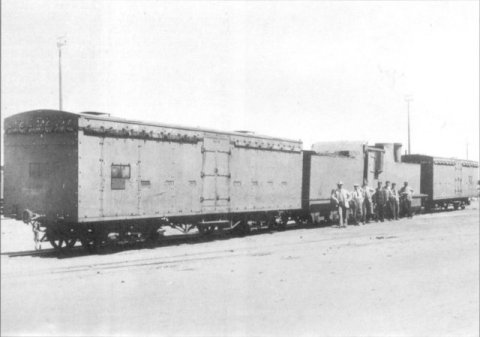
One of the stretches of railway that received a great deal of attention from Boer commandos between late 1900 and mid-1901 was that which linked the Mozambique port of Delagoa Bay with Pretoria, the capital of the Transvaal. A Boer unit that was particularly successful in attacking this railway line was commanded by a renegade by the name of Captain Jack Hindon.
The Hindon Scouts
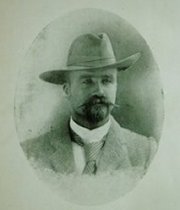
Captain Oliver Jack Hindon, known as 'Dynamite Jack' for his many attacks against British trains, was Scottish by birth. He had joined the British Army as a boy soldier, but deserted, claiming to have been physically assaulted by a senior member of his unit. The alleged incident had happened while he had been stationed in Durban in the British colony of Natal. After this, Hindon travelled north to the Transvaal Republic where he became a stonemason and later a police officer. In 1895/6 he assisted the Boers against Dr Starr Jameson during the latter's failed attempt to take, by force, the Transvaal Republic and its gold deposits, in what came to be known as the infamous Jameson Raid. For his loyalty, Jack Hindon was awarded citizenship of the Transvaal Republic, an honour not normally bestowed upon an Uitlander (foreigner) at the time. At the outbreak of the Anglo-Boer War, Hindon was sent to the Middelburg Commando, with whom he fought with distinction throughout the first year of the campaign, particularly at Spioenkop (D Aitken, June 2001).
Between February and April 1900, Jack Hindon formed a unit known as the Hindon Scouts, which would prove so successful that Lord Kitchener publicly stated that Hindon had caused more difficulties for British and colonial forces than any other Boer commander (Aitken, June 2001). The Hindon Scouts became notorious train-wreckers, particularly along the Pretoria-Delagoa Bay Railway Line where they operated under the command of General Ben Viljoen alongside Captain Henri Slegtkamp and his group of commandos. From September 1900 until almost the end of the war, the Hindon Scouts relentlessly disrupted British use of the South African railway network. From about September 1901, however, Hindon's attacks were curtailed by a combination of defensive measures employed by the British and colonial troops (Aitken, June 2001).
Tactics employed by Hindon's wrecker parties
Although explosives were used to lethal effect against British trains by a number of Boer commandos, the tactics and technology employed by Jack Hindon and his men stand out as having been particularly sophisticated. Hindon would take time to survey the ground in order to ensure that, once a train had been derailed, his unit would have the advantage of surprise and the ability to withdraw rapidly from the scene. Author Gustav Preller (1916, Chapter 16, translated) tells us that, during a reconnaissance on 16 January 1901, Hindon noticed that three trains were being sent out in succession and at short intervals from Balmoral. He realised that, by derailing the first of these trains at a particular point on a slight rise, his men would have an opportunity to ambush the second and third trains before the British understood what was happening and were able to react accordingly. This particular raid was so successful that Hindon's unit was able to resupply itself sufficiently for several more months in the field (G S Preller, 1916, p175).
Considering the technology available at the time, perhaps even more impressive than the tactics deployed by Hindon and his men was the relative sophistication of the IED they used to derail British trains. This was a victim-operated device, based on the firing mechanism of a Martini-Henry rifle, and it derailed trains on many occasions. Research indicates that this particular type of device was unique to Jack Hindon's party of train wreckers and that the IED was designed to be set off by a locomotive passing over the rail track directly above it. The designer of the device was a man named Carl Cremer. Not much is known about him, other than that he was an associate of Jack Hindon and, one assumes, a member of his unit. The payload was sometimes up to 50 dynamite cartridges contained in a bucket, although it is probable that the size of the main charge was at least half as large as this. The bucket was buried beneath the ballast (stone aggregate) surrounding the track and sleepers. The great advantage was that it did not bring about destruction on a large scale, simply derailing the target locomotive and often rendering it unserviceable. This meant that the damage to the track was relatively superficial. However, replacing twisted and damaged tracks was often a time-consuming business for the British railway engineers. In most cases, the train was brought to a standstill at a distance of about 30 yards (27 metres) from the point of contact, at which stage, according to Preller (1916, p175), the British had very little time in which to decide between two courses of action - to fight or to surrender.
Those who positioned the IED and bucket of dynamite were very careful not to leave any footprints which could be traced by British foot patrols. To avoid leaving any sign of their presence, the perpetrators would walk for quite a distance along the rails to and from the selected site. There, the ballast would be painstakingly removed from beneath the rails and, after the device had been correctly positioned, it would be carefully replaced. The trigger, placed in intimate contact with the underside of the track, was designed to be pulled by the weight of the target locomotive as it passed over. Before leaving the site, the wrecker party would place all excess stones in a bag and remove them. At every stage of the operation, great care was taken to conceal all traces of the device (D Aitken, December 2000).
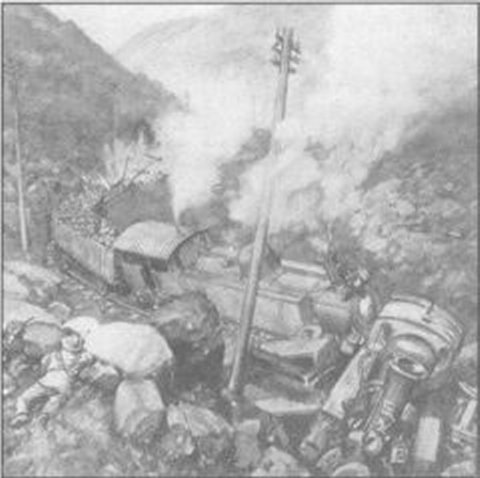
Impact on British rail operations
Between June and mid-September 1900, construction engineers of the Imperial Military Railways (IMR) made repairs to the Pretoria-Delagoa Bay Railway Line. The IMR began to move troops and materiel along the line once the Komatipoort Station was finally occupied by the British forces on 25 September 1900 (D Aitken, October 1999). A total of 102 trains were used to transport troops from the eastern part of the Transvaal to Pretoria from 26 September to 10 October 1900 (Aitken, October 1999). However, during the period between September 1900 and July 1901, a number of bridges and culverts were destroyed as well as tracks damaged and trains derailed (Aitken, June 2001). Throughout the first half of 1901, the number of train derailments along the railway line gathered momentum. Trains were derailed on a daily basis and the line was often damaged at some point (Aitken, October 1999). These attacks were so successful that, from the beginning of October 1900, the IMR suspended the running of trains at night on the line between Pretoria and Waterval. Troop trains returning to Pretoria were routinely ambushed and it became clear that suitable defensive measures needed to be put in place if the British were going to be able to continue to use the railway (E P C Girouard, 1903, p46).
British measures and Boer countermeasures
After assuming command of the British and Imperial forces in South Africa, one of Lord Kitchener's first decisions was to strengthen the defence of the railways. A number of early measures were implemented, such as digging camouflaged open trenches at railway stations, culverts and bridges in order to protect personnel against artillery fire. Such long trench systems proved to be ineffective, however, absorbing a large amount of manpower for patrol and defensive purposes (Girouard, 1903, p46). Between 1 and 7 October 1900, the Boers launched a series of successful attacks against four locations on the Pretoria-Delagoa Bay Railway Line, derailing and destroying three trains and a culvert at Brugspruit (Girouard, 1903, p46).
On 26 October, and acting on an intelligence tipoff, British troops under the command of General Smith-Dorrien attacked what they believed to be the headquarters of the Boer railway attackers, located at Witkloof, some 30km south of Belfast. However, despite this, Boer attacks against the railway became more frequent and more destructive. After this attack, British forces carried out further raids along the Komati River, which were fiercely resisted by the Boers. Soon afterwards, British troops began to implement a programme of raiding and burning farms in the vicinity of the railway in an attempt to prevent further attacks (Preller, 1916, pp161-3).
Hindon was forced to adopt new tactics because of the greater attention that British forces began to pay to the security of the railway line. Increasingly, more armoured trains were in use during the day so Hindon and his men began to set up their IEDs at night. These ambush sites would be kept under close observation the following day. Hindon became perplexed because many of his IEDs were being discovered by British patrols and rendered safe. It seemed as though British troops were able to follow the train wreckers' tracks for distances of up to 600 metres through the veld. By closely observing the way in which the early morning British clearance patrols operated Hindon soon realised that they were simply following marks left by Hindon and his men in the early morning dew. Henceforth, Hindon made sure that his IEDs were positioned early in the evening, before the air had cooledsufficiently for dew to form on the grass. The British had little success in following the train-wreckers' tracks after this change in tactic (Aitken, June 2001).
Having initiated a programme of protecting military trains with armour, British commanders instituted a procedure whereby an armoured train, which had the locomotive located between a few reinforced trucks, would travel ahead of each scheduled passenger or goods train. The front truck, designed to be sacrificial, would usually contain a section of soldiers. It would appear that the task of survivors of the blast of the IED strike was to protect the locomotive and its crew. After the attack, the locomotive would simply be uncoupled from the damaged truck and then it would return safely up the railway with the undamaged trucks in tow. Hindon soon identified this tactic and introduced a new measure which would allow the first, armoured, train with its soldiers to pass safely before detonating a device directly under the locomotive of the second train (Aitken, June 2001). Presumably, after the first train had passed over a partially constructed IED, the firing mechanism would swiftly be placed under the rail and connected up in the time window before the arrival of the second, target, train.
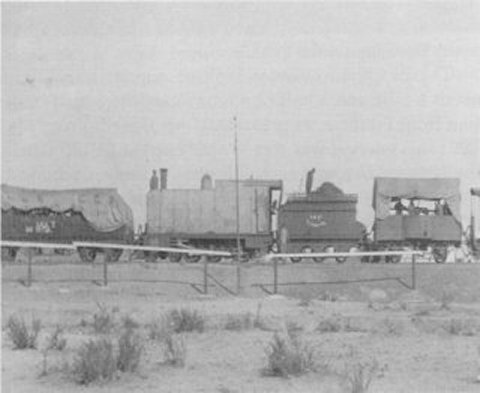
By May 1901, the British changed tactics again, this time using two locomotives rather than one positioned between a number of trucks and carriages. The idea behind this countermeasure was that, in the event of one of the locomotives being disabled, the other might be able to carry on with the journey. On 20 May 1901, Hindon's men observed this type of supply train near Godwan Station. On this occasion, Hindon departed from his usual use of a victim-operated IED, instead opting for a command-initiated variant. He attached a length of wire (presumably to the trigger of the IED) and concealed himself approximately 40 metres from the track. At the optimum moment, he initiated the device by simply pulling on the wire, operating the trigger and setting off the firing mechanism. Although this attack brought the train to a standstill, Hindon and his men did not manage to plunder much in the way of supplies due to the steady rate of fire that was brought to bear upon them by British troops who had survived the initial explosion (B Viljoen, pp380, 381).
By July 1901, the Pretoria-Delagoa Bay Railway Line was being defended by a system of blockhouses joined by a network of barbed wire entanglements. The number of armoured trains on the line was increased and deep trenches were dug along both sides of the track to provide positions from which the line could be defended and to create obstacles to those attempting to attack the line. Furthermore, the British implemented a system of frequent patrols by locally-stationed troops, the aim being to search for signs of the presence of enemy activity while denying freedom of movement to would-be attackers (Aitken, June 2001). By this stage of the campaign, the British had begun to execute captured men who had been involved in train-wrecking (Sibbald, 1993, p208). As a result, Hindon and his men decided that further attacks on the line would be pointless; they moved their operations to the northern Transvaal, in the vicinity of Naboomspruit on the Pretoria-Pietersburg Railway Line.
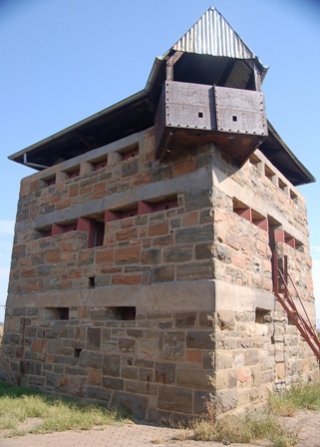
IED Technical specification
Mechanism. The IED firing mechanism was relatively simple in design and research shows that the idea of modifying a Martini-Henry rifle in this way had not been used before in this conflict. The best description, which explains how the rifle was modified, is contained in Chapter 16 of Gustav Preller's book, Kaptein Hindon: Oorlogsavonture van 'n Verbaas
Verkenner (Pretoria, 1916), p 175:
Step one: The barrel of a Martini-Henry rifle was sawn off, approximately four inches (10cm) in front of the lock (main mechanism). The butt was also sawn off behind the main mechanism and discarded.
Step two: The trigger guard was sawn off so that the trigger was exposed.
Step three: A wooden frame was manufactured to hold the mechanism upright. This was an oblong shape the length of the Martini-Henry mechanism, four inches (10cm) broad and approximately same in depth. The mechanism was bolted to the frame in such a way that the trigger was proud of the upper edge.
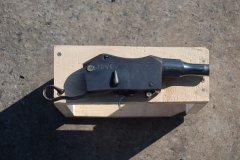
The explosive train consisted of a cartridge case, with the bullet and wadding plug removed, fitted into the breech. (In South Africa at the time, calibres varied between the older .577/450 and the newer .303 'Martini-Enfield' variants).
Step four: A bag containing an unsubstantiated number of plain (non-electric) detonators was attached to the muzzle, the idea being that the propellant gases from the cartridge case would initiate some or all of these.
The main charge consisted of a bucket containing dynamite cartridges. However, there is no information about how the bag of detonators was linked to the main charge. This was presumably done by fuze instantaneous, which was used extensively by the mining industry in the 1880s. (This was a rapid burning fuze, as opposed to a slow fuze, with an ignition rate of several thousand feet per minute, but slower than that of a detonating cord).
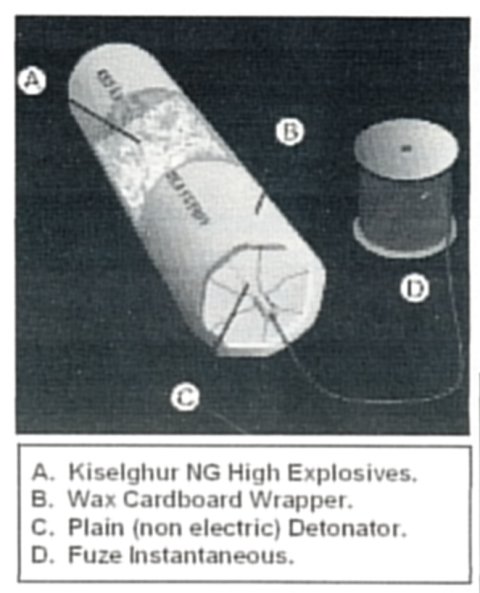
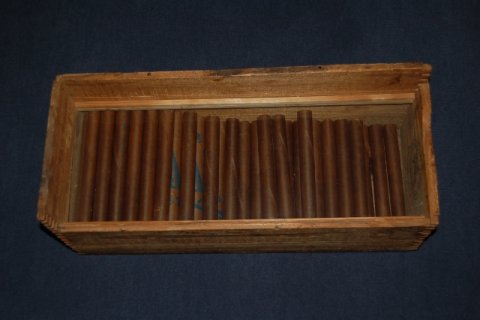
Operation. According to Preller (1916, p175), the IED was prepared and positioned as follows:
'The mine had to be planted at night, which often meant all sorts of difficulty in the dark, but was achievable provided that everything was well prepared beforehand and the trigger of the gun was exposed. In fact, if the whole arrangement was firmly wedged under the track-bar, then the result was certain, because the ballast was removed from both sides of the mine so as to be certain that subsidence caused by the locomotive was enough to depress the trigger. Through the weight of the locomotive, the rail would depress onto the trigger, which then fired. In most cases, the dynamite charge consisted of approximately fifty cartridges, placed next to the bag containing the dynamite detonators. By carefully replacing the ballast on the outside, and providing no unnecessary tracks were made, the existence of the 'mine' escaped the closest examination.'
Explosives' properties. Research shows that dynamite was the type of high explosives predominantly used by the Boer forces to destroy railway lines and bridges during the war. President Paul Kruger established the Zuid Afrikaansche Fabrieken voor Ontplofbare Stoffen Beperk factory at Modderfontein in 1895. The factory became the main supplier of nitroglycerine-based explosives and accessories for the gold mining industry on the Witwatersrand. Here, Dynamite No 1 was manufactured. In 1887, this explosive was licensed to the following specification (J P Cundill, 1895, pp42-3): 'Dynamite No 1, consisting of not more than 75 parts by weight of thoroughly purified nitroglycerine, uniformly spread mixed with 25 parts by weight of an infusorial earth known as kiselguhr, and sufficiently absorbent in quantity when mixed in the above proportions to prevent the exudation of nitroglycerine.'
By 1898, the factory's role had changed from that of manufacturer of commercial explosives to that of supplier of munitions to the two Boer republics. During the year leading up to the outbreak of hostilities, a total of 312 317 cases of dynamite, ammon gelignite and blasting gelatine were produced ('History of AEL', http://www.ael.co.za/Website/webform.nsf/viwebpagtext). Each dynamite cartridge was wrapped in brown paraffined paper and packaged into 51b (2,268kg) packages which were packed into wooden boxes. Within the mining industry at the time, Dynamite No 1 was colloquially referred to as 'guhr' explosives. There are numerous references to cartridges of dynamite being used by both Hindon's commando and the first Transvaal Irish Brigade (D McCracken, pp113,137). It is highly likely, therefore, that Dynamite No 1 was the type of explosive to which Boer wrecking parties would have had access between 1900 and 1902.
The power or performance of an explosive is a representation of its ability to deliver energy. There are a number of different tests to determine an explosive's performance. Results are normally compared to a scientific standard explosive, TNT. A study comparing the performance of nitro-glycerine to that of TNT was conducted in 1973 (Swatosh et ai, 1973). This study determined that peak pressure TNT equivalency ranged from 80% to 240%. Furthermore, in the scaled distance range and impulse tests, TNT equivalency ranged from 120% to 190%. Expressed as a ratio, the equivalence of nitro-glycerine to TNT is considered to be 1,48:1.
Blasting explosives such as Dynamite No 1 were optimised for their 'lift and heave' characteristics in order to displace large quantities of rock. Coincidentally, these properties were probably extremely useful to the Boers in destroying railway lines and damaging rolling stock. Where the main charge comprised in the region of fifty cartridges of Dynamite No 1 contained in a bucket, the detonation would have been extremely powerful indeed and it would probably have overmatched the target effect anticipated by the train wreckers.
The trial
Trial outline. In order to test the effectiveness of the IED's firing mechanism, a trial was conducted on 25 July 2009 at the Friends of the Rail site at Capital Park Station, Pretoria, Gauteng. The Explosives Section of the South African Police Service assisted in obtaining components for the construction of the device and in running the trial safely. The aim of the trial was to determine whether or not the weight of a steam train travelling over the replica IED could set off a debulleted .303 cartridge.
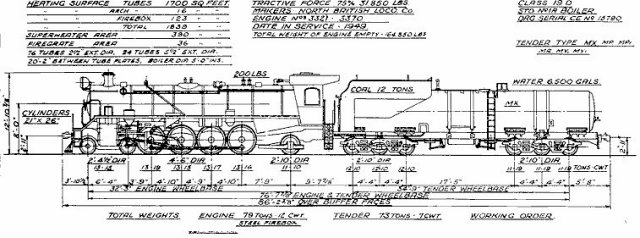
The steam locomotive used in the trial was a Class 190, built in 1938 in Germany by Friedland Krupp of Essen. The locomotive was designed to operate on both main and branch line rail. The combined weight of the engine and tender was approximately 140 071 kg (engine mass [working order] 73 483kg plus tender mass [working order] 66 588kg. See http://friends_of_the_rail.com/ index?php ?option =com _ content&task=view&id=86). Trial setup. A .303 calibre Martini-Enfield rifle was modified in accordance with the description in Gustav Preller's account, and the firing mechanism was mounted on a frame made from timber measuring approximately 10,16cm by 10,16cm. The only unexpected modification that needed to be made was to bend the lever so that it remained flush with the upper edge of the frame. This modification ensured that the lever did not interfere with the protrusion of the trigger, which would need to be unobstructed in order to depress freely when downward pressure was applied to the rail track by the locomotive. A wooden sleeper was removed, and the device was positioned centrally under one of the rail tracks with the trigger in intimate contact with the metal underside. The device was then buried under the loose ballast, and signs of digging were disguised.
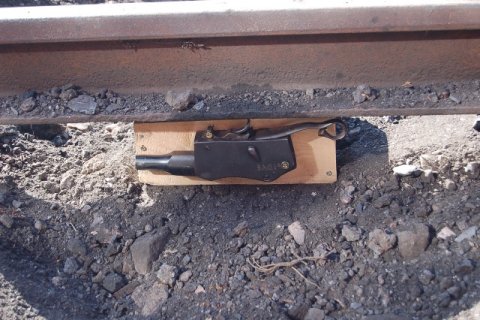
Technical trial results. The trial conclusively proved that the performance of the IED firing mechanism was satisfactory and reliable. Three runs were made at different speeds by the locomotive over the buried IED, and on each occasion the trigger operated and the cartridge fired. It is therefore deduced that the rail depressed by a degree of at least 10.3mm, since this was the measurement recorded as the amount of trigger play in the mechanism tested. During the trial, it was also discovered that the .303 bullet had to be removed carefully from the cartridge case, as any deformity to the mouth of the cartridge case would cause it to jam in the breech. It is not known whether Hindon had access to a bullet-puller.
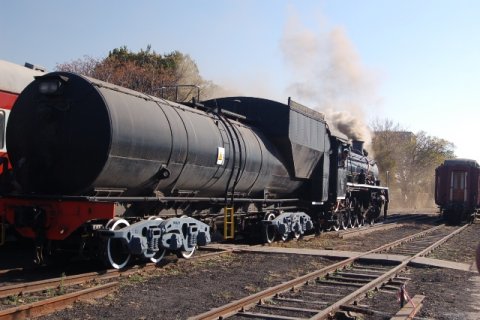
Tactical trial results. In terms of assessing the time that it would have taken to set up the device, it is estimated that a team of two to three people would have taken between 45 minutes to an hour to bury the main charge and to position the IED firing mechanism under the rail track. It is probable that this activity would have taken considerably longer in the dark, unless lanterns were used. To achieve maximum explosive safety for the train wreckers, it is assumed that the IED would have been positioned in the following order:
Jack Hindon and some of his men finally surrendered to the British in May 1902, just before the conclusion of the Peace at Vereeniging. After some deliberation, they were cleared of all infractions of the laws of war (Aitken, December 2000).
When one considers the effectiveness of this type of IED, it is easy to see why the Hindon Scouts were so successful against British and colonial forces, which were so reliant on the South African railway network for sustaining their war effort. Placed in historical context, this was an innovative device which was extremely difficult to detect; it simply required track displacement in order to operate, thus ensuring that the target locomotive was directly above the main charge when it detonated. By placing armour on their military trains and thereby increasing the overall weight on the railway tracks, the British forces did not find a technical solution to counter the effect of the IEDs. Rather, they developed a tactical methodology which combined obstacles such as ditches, trenches and barbed wire with key point defence (blockhouses) and a large number of troops (to patrol, react and defend) in order to frustrate Hindon's operations to such a degree that he was forced to move from the area.
Acknowledgements
This research and the subsequent trial associated with this project was made possible by the willing support provided by the following organisations and individuals:
University of Pretoria, Afrikaans Department: Miss Jacomien van Niekerk;
South African Police Service, Logistics Department:
Superintendant Buks Kruger;
South African Police Service, Explosives Section:
Inspector Terry Finney;
Friends of the Rail, Chairman, Mr Nathan Berelowitz, and Secretary, Mr Chris Janish;
Hazard Management Solutions, Mr Roger Davis.
LIST OF SOURCES
Return to Journal Index OR Society's Home page
South African Military History Society / scribe@samilitaryhistory.org